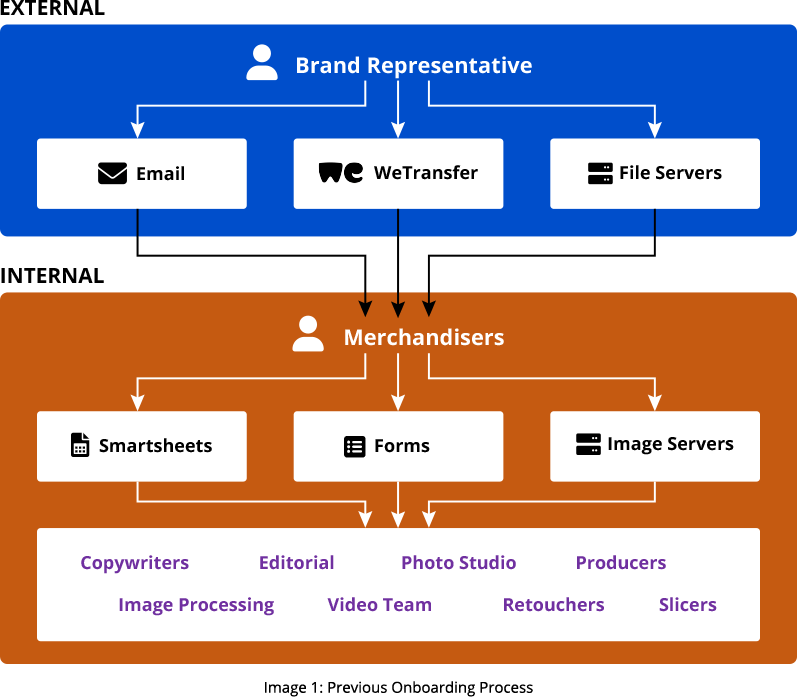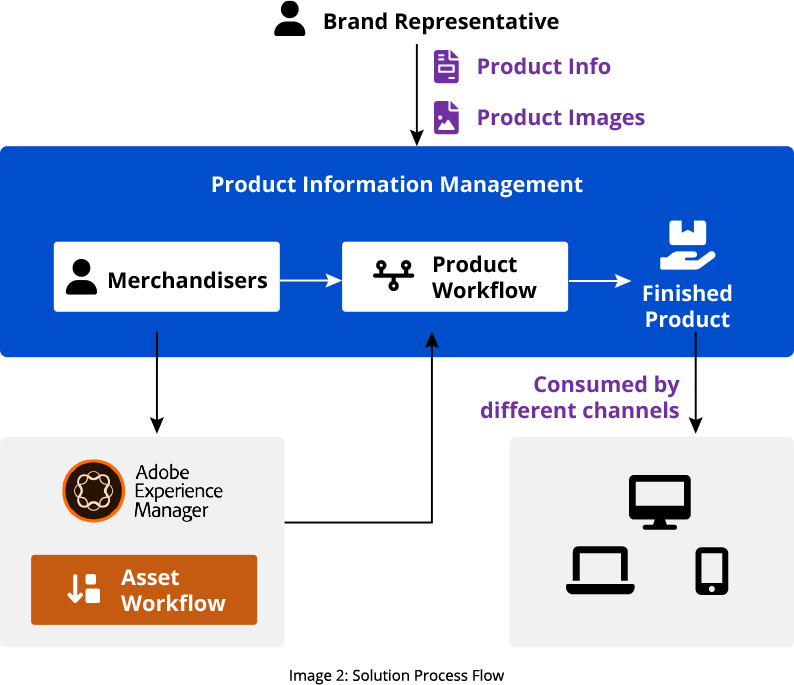A key company business growth inhibitor was a lengthy product launch cycle, which involved brand representatives, merchandisers, and multiple creative teams. Product details such as titles, descriptions, and images flowed to the company from several channels, including email, files residing on file servers, and dropbox sites.
Creative content was stored in many different places and a significant number of review and modification requests were made between the brand representatives and its merchandisers. Once approved, product details were entered into a spreadsheet. The various creative teams would then start generating copy, images, videos, and other digital content.
Eventually, these assets come together as a product entity consumed through several channels.

The company wanted to achieve:
- A shorter product launch cycle: The four to six-week launch cycle for new, hot products was critically hampering business growth. The company was looking for more efficient ways to launch new products faster.
- Centralized controlled access to information: Product information was maintained in many different places, including Smartsheets, spreadsheets, and a database. The company wanted to create a central repository of information with access and version control and the ability to audit, track and search through product details.
- Lower costs: At times not finding product assets easily, the company’s internal teams were creating duplicate digital assets, which led to high storage fees and confusion. Rights on digital assets could not be adequately managed, resulting in potential penalties and legal fees. The company was looking for ways to lower the costs associated with product duplication.
- An organized launch process: Ad hoc communication with external teams quickly got out of control. A centralized high-level view of the product lifecycle was impossible, and manual steps were prone to error. The company wanted to automate the process and allow its team to monitor and manage each step of the product launch cycle.
- Seamless integration between PIM and DAM: While PIM is great for managing product information, it is not good for managing digital assets. Digital Asset Management (DAM) is best suited for managing digital assets. The ideal solution would include the best of both worlds in an integrated setup.




